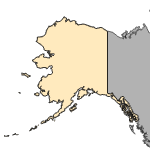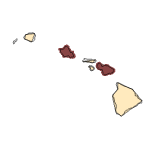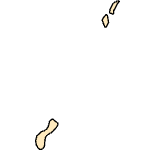Hypostomus sp. (watwata group)
(suckermouth catfish)
Fishes
Exotic |
|
Common name: suckermouth catfish
Identification: The genus Hypostomus is the largest in the family Loricariidae, containing over 130 species and many undescribed forms (Armbruster 2004). Several apparently different Hypostomus species have been collected in the United States but have not been definitively identified to species (Page and Burr 1991; Courtenay and Stauffer 1990). Distinguishing characteristics of the genus and a key to loricariid genera were provided by Burgess (1989) and Armbruster (1997); a rediscription of the genus and list of included species was presented in Armbruster (2004). Highlighting the serious need for additional taxonomic and systematic work, Armbruster (1997, 2004) concluded that it is difficult to identify most species in the genus, and that there is no unique characters to diagnose the genus. Photographs appeared in Burgess (1989) and Ferraris (1991). Hypostomus has officially replaced the generic name Plecostomus. The genus was included in the key to Texas fishes of Hubbs et al. (1991); several identifying traits were also given by Page and Burr (1991), although in a later edition (Page and Burr 2011) those authors indicate the difficulty of identifying specimens to species. Hypostomus can be distinguished from Pterygoplichthys (another loricariid common in the aquarium trade that has often been misidentified as Hypostomus) by the number of dorsal fin rays (7 vs 9-14 in Pterygoplichthys). In Hawaii, introduced Hypostomus can be distinguished from the sympatric introduced Ancistrus cf. temminckii by rough bony plates present along the snout margin (vs. plates absent in Ancistrus; Sabaj and Englund 1999).
Native Range:



|

Alaska |

Hawaii |

Puerto Rico &
Virgin Islands |

Guam Saipan |
Hydrologic Unit Codes (HUCs) Explained
Interactive maps: Point Distribution Maps
Nonindigenous Occurrences:
Table 1. States with nonindigenous occurrences, the earliest and latest observations in each state, and the tally and names of HUCs with observations†. Names and dates are hyperlinked to their relevant specimen records. The list of references for all nonindigenous occurrences of Hypostomus sp. (watwata group) are found here.
Table last updated 2/16/2025
† Populations may not be currently present.
Means of Introduction: Aquarium release
Status: Established in Hawaii.
Impact of Introduction: Because of their abundance in Hawaii, introduced Hypostomus, Pterygoplichthys, and Ancistrus may compete for food and space with native stream species (Devick 1989; Sabaj and Englund 1999).
References: (click for full references)
Devick, W.S. 1989. Disturbances and fluctuations in the Wahiawa Reservoir ecosystem. Project No. F-14-R-13, Job 4, Study I. Division of Aquatic Resources, Hawaii Dept of Land and Natural Resources.
Mundy, B.C. 2005. Checklist of fishes of the Hawaiian archipelago. Bishop Museum Bulletins in Zoology, Number 6.
Sabaj, M.H. and R.A. Englund. 1999. Preliminary identification and current distribution of two suckermouth armored catfishes (Loricariidae) intrdouced to Oahu streams. Bishop Museum Occasional Papers 59:50-55.
Other Resources:
FishBase Summary
Author:
Neilson, M.E.
Revision Date: 6/14/2019
Peer Review Date: 10/22/2013
Citation Information:
Neilson, M.E., 2025, Hypostomus sp. (watwata group): U.S. Geological Survey, Nonindigenous Aquatic Species Database, Gainesville, FL, https://nas.er.usgs.gov/queries/FactSheet.aspx?speciesID=763, Revision Date: 6/14/2019, Peer Review Date: 10/22/2013, Access Date: 2/17/2025
This information is preliminary or provisional and is subject to revision. It is being provided to meet the need for timely best science. The information has not received final approval by the U.S. Geological Survey (USGS) and is provided on the condition that neither the USGS nor the U.S. Government shall be held liable for any damages resulting from the authorized or unauthorized use of the information.